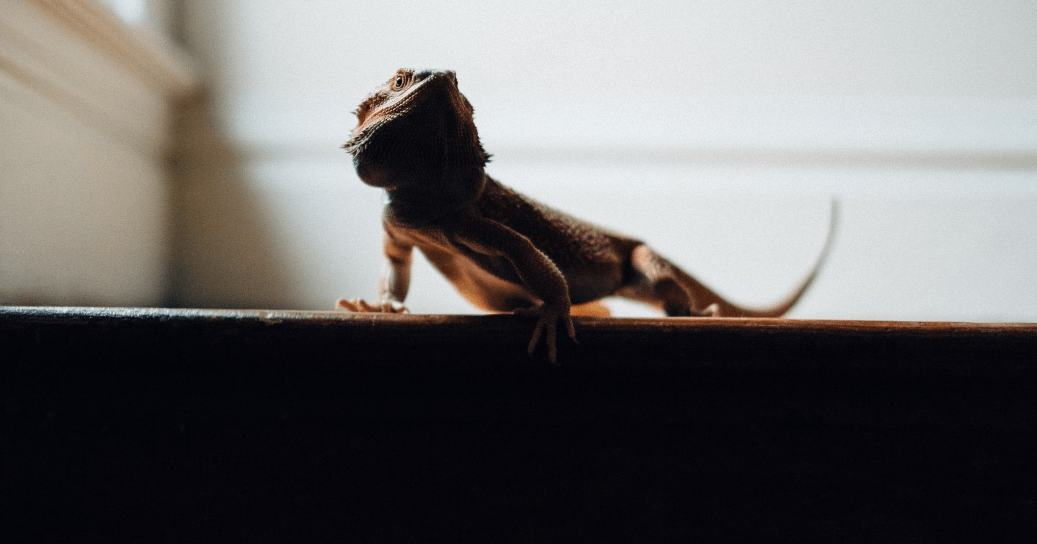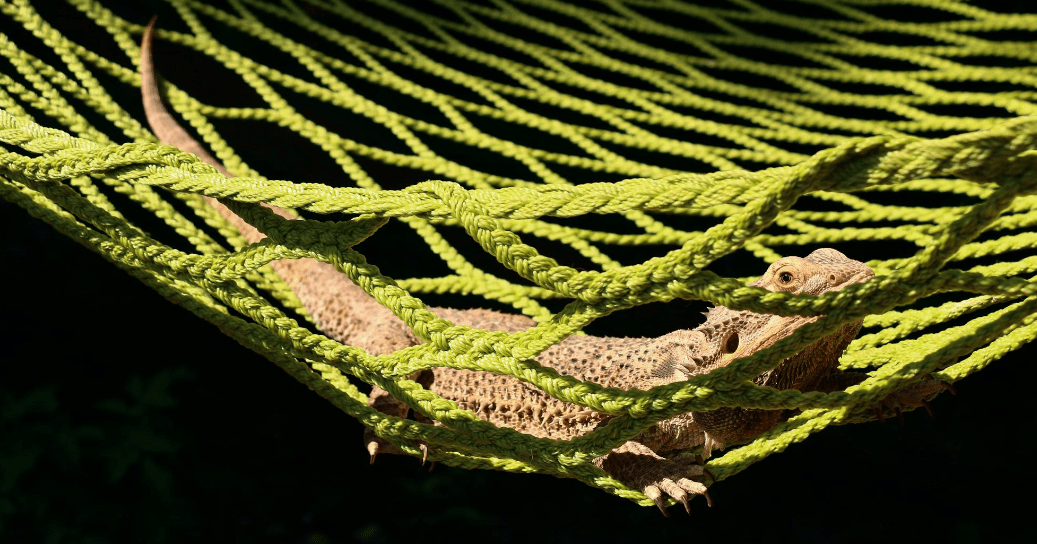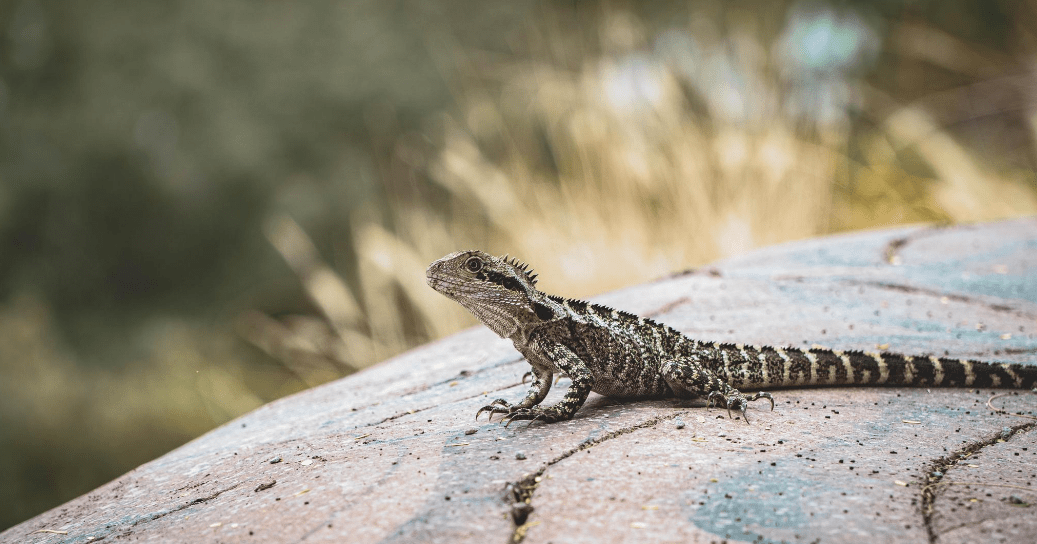How to Pick the Best Basking Bulbs for Bearded Dragon in 2022
Beforere you introduce your new bearded dragon to his new enclosure, you should aim to recreate what’s similar in the wild, this includes a good source of heating.
One of the most important requirements for your bearded dragon is a basking area to help with its thermoregulation.
Your bearded dragon needs an external source of heat to raise its core temperature.
There are a lot of basking bulbs out there, but not all of them are safe, efficient, or durable enough for use.
Prolonged time in low temperature could lead to respiratory infections.
In this article, we will help you choose only the best basking bulbs for a bearded dragon.
The Best Basking Bulbs for Bearded Dragon
Bearded Dragons do best with a bright white light and do poorly if they do not have this type of light.
You can get bright white light with a typical household light bulb.

Our Top Pick
60W Equivalent, A19 LED Light Bulb
If you click this link and make a purchase, we earn a commission at no additional cost to you.
Most pet stores light bulbs do not produce the correct color of light, neither are they generally as bright, so I do not recommend them.
I also suggest getting clear household bulbs rather than white bulbs, as the clear ones are usually brighter and their light is more genuine.
Another good basking bulb you can use is halogen floods, as these give a whole lot of heat and a good spectrum of light.

Our Top Pick
GU10 Bulb, 6 Pack Halogen 120V 50W, Dimmable
If you click this link and make a purchase, we earn a commission at no additional cost to you.
Heat and UVA – The Basking Light

The light that produces heat and some UVA light (visible light) is called the basking light.
The bright light of the basking light is needed for day-night cycles, meaning 12-14 hours on and 12-10 hours off.
It will heat the surface of a basking area to 100-110 degrees F or (38 to 43 degrees C), which is the optimal temperature for a bearded dragon’s digestion and necessary for their overall well-being.
Note that young bearded dragons prefer 105-110 degrees F (40-43 C), while older dragons prefer 100-105 F (38-40 C) on the surface of the basking spot.
They should also have access to a cooler area across the enclosure away from the basking area, and this is called the “cool side”.
The cooler side of the enclosure should be around 70-85 degrees F (21-30 C) for all ages.
You can test with the wattages of the basking light until you find one that provides the correct temp gradient.
Getting a dimmer to use one wattage and adjust with it rather than switching the bulb out for a lower wattage one all the time, will be a godsend.
You also have the option to adjust the height of the basking area to get the right temperature.

Our Top Pick
Lutron Credenza Plug-In Dimmer for Halogen and Incandescent Bulbs
If you click this link and make a purchase, we earn a commission at no additional cost to you.
Why is Light Important for Bearded Dragons?
The first thing that we need to cover is that bearded dragons are reptiles.
The significance of this is that all reptiles do something called thermoregulation.
Basically, as mammals, we humans maintain our constant body temperature, however, reptiles rely on outside light sources to raise or lower their body temperature depending on what they need.

They can raise their body temperature in order to increase metabolism or lower them to be more inactive.
Reptiles achieve this by moving to different areas of their surroundings to warm up or cool down.
This can be done through radiation, convection, or by the evaporation of body fluids.
It may be either raised or lowered by the conduction of heat to or from the substratum or the air.
Conductive heat is the transfer of heat within an object (such as down a long metal pole) or between two objects that are touching each other.
The reptile sitting on a basking spot that has been warmed by the sun/heating element glowing on it, or from within in the case of a heating pad/rock it’s called conductive heat.
Convective heat usually involves the movement of either air or water and the heat is carried via movement of this matter.
The warm air/water that blows/flows across the reptile it’s called convective heat
Radiant heat transfer involves the flow of thermal energy by electromagnetic waves. An example of radiation transfer is the reptile or amphibian basking in the sunlight.
The reptile absorbs the electromagnetic radiation from the sun/heat element it’s called radiant heat.
What is UV Light and Why do Beardies Need it?

This UV light Spectrum is broken up into 3 parts, these being the UVA, UVB and UVC lights and they can all be found in the natural sunlight.
The UV light wavelengths are filtered by plastic and glass so when setting them up for the habitat be sure they have direct exposure to the enclosure.
The UVB light helps your turtle get his vitamin D3 which also absorbs calcium.
You can also expose your turtle to a UVA light as this will help him regulate his behaviors such as feeding, daily movement, and mating.
These two types of ultraviolet lights play different roles for your reptile pet and combining them will ensure him a long-lasting life.
The pathway starts when cholesterol, provitamin D, (7DHC) is manufactured by the cells in the skin.
When exposed to the UVB light at wavelengths between 290 – 315nm, this provitamin D is converted very fast to previtamin D3.
Previtamin D3 is then isomerized (modified by a re-arrangement of atoms in the molecule) gradually, in warm skin over several hours to vitamin D3.
Heat is needed for the reaction to proceed at a normal rate.
Reptiles obtain this heat from the sun or any other heating source, under the form of UVA light.
The vitamin D3 is released from the skin cell membranes and is taken up by a “vitamin D-binding protein” into the plasma.
It is therefore carried in the bloodstream from the skin to the liver, where it is hydroxylated to calcediol, 25-hydroxy-vitamin D3.
This is the substance that is tested for in blood samples taken to assess the reptile’s vitamin D status.
Types of Basking Bulbs for Bearded Dragon
Visible Light
Basking lights that emit visible light are the perfect choice for daytime use to provide heat and warmth for your pet.
Visible light basking bulbs act both as a source of heat to meet up with your pet’s needs in its enclosure, and also as an emitter of bright warm light.
Your bearded dragon doesn’t need light at night, and so if you must provide warmth at night, then don’t use visible light basking bulbs.
The light would disrupt their sleep cycle leading to different health and behavioral problems.
Infrared Light
Infrared basking lights emit radiation within the infrared electromagnetic spectrum.
These types of lights transfer heat directly to the body of your bearded dragon, making the most efficient.
They also provide more heat per watt because they don’t emit other forms of radiation.
You can use these types of bulbs all day without disrupting the sleep cycle of your pet.
So if you are wondering about the best product to use in keeping your bearded dragon warm during the cold nights, infrared lights are the best options.
The Right Temperature for A Bearded Dragon Enclosure
The reason why you should set your tank upright is to give your pet a new home that’s close to its natural home as much as possible.
Bearded dragons amongst other reptiles cannot adapt to a new environment in terms of temperature unlike humans and so you would need to replicate their original home if you want to ensure that they stay healthy.
Native to the hot deserts of Australia, they are used to being in the heat and thrive in high temperatures during the day, and cool but warm temperatures at night.

By this, you need to create such conditions in their enclosure.
Failure to do this would lead to digestive problems, lethargy, and even death.
The Basking Spot
In your pet’s enclosure, the basking area is meant to be the hottest.
This is the resting area where your pet would absorb heat and UVB.
The temperature of other areas in the enclosure may remain constant all through your pet’s life but the temperature of the basking area changes with the age of your beardie to meet its heat needs.

Our Top Pick
Carolina Custom Cages Natural Habitat Rocks
If you click this link and make a purchase, we earn a commission at no additional cost to you.
For adults, the temperature of their basking spot should be between 100 to 105 degrees F (38 to 41 degrees C), while babies need around 110 degrees F (43 degrees C).
The temperature of the basking spot during the day should be different from the nighttime temperature just as it would be in the wild.
So always put off the basking lights at night and if you won’t be able to meet up with this daily, use a timer switch to turn off the lights at night, and back on in the morning.
Have a thermometer mounted nearby so you can regularly check the basking temperature.

Our Top Pick
Exo Terra Thermometer for Reptile Terrarium
If you click this link and make a purchase, we earn a commission at no additional cost to you.
Cool/ Hide Spot
Bearded dragons depend solely on the environment to control their internal temperature.
When humans get hot, we sweat to cool down.
Bearded dragons don’t have sweat glands and they can try to cool down a bit by sitting with their mouths open.
In the wild, they cool even better by digging into the soil or hiding under a shade.
You need to provide these in your bearded dragon enclosure.

Our Top Pick
Habba Hut Hideaway for Reptiles
If you click this link and make a purchase, we earn a commission at no additional cost to you.
Place a piece of furniture like a log or rock on the opposite side of the basking area where your beardie can cool off and hide from the heat and UV rays.
The cool spot should be within the temperature range of 700 to 850 Fahrenheit (210 to 290C).
It depends mostly on your tank size and the type of heater you are using but anything within this range is fine.
Mount a thermometer in this area so you can easily monitor the temperature and be sure it’s within acceptable limits.
Night Lights
Nighttime heat is only needed if the temperature at night falls below 65 degrees F (18.3 degrees C).
The best source of nighttime heat for a bearded dragon is a ceramic geat emitter (CHE).
CHEs produces no light, only heat.

Our Top Pick
Wuhostam 2 Pack 100W Infrared Ceramic Heat Lamp
If you click this link and make a purchase, we earn a commission at no additional cost to you.
Bearded dragons are kept awake by lights, such as those that produce red light, but CHEs don’t have this issue.
Bearded dragons can burn themselves on heat pads and heat rocks, so these are not a good solution.
Ceramic heat emitters, however, work amazingly.
Overall Temperature
The overall temperature of your bearded dragon’s tank is the general amount temperature that the tank rests at.
You should keep this temperature around 900 Fahrenheit (320 C) and you can monitor this with a temp gun and point it in the middle of the basking and shade areas.

Our Top Pick
Etekcity Infrared Thermometer 774 Temperature Gun
If you click this link and make a purchase, we earn a commission at no additional cost to you.
Things to Look Out for When Buying Heat Bulbs for Bearded Dragon
With the infinite supply of asking bulbs for bearded dragons that are available in the market, making the right choice can be a bit of a problem especially if you are a new parent.
There are a lot of things to consider when making the right choice of bulbs for beardies and there are:
Type of Bulb
There are different types of basking lights for a bearded dragon that you will see and it all depends on when you intend to use the bulb.
Do you want to use it during the day or you want to use it all day?
If you are in a cold area, you may consider leaving the basking light on at night to raise the temperature of your pet’s enclosure.
The best type of bulb for this time is the infrared bulb as it doesn’t emit visible light and won’t disturb your pet’s nighttime rest.
Does It Have Fitting?
Some products come with their fitting, so you don’t have to worry about getting another one, and it will be compatible with the bulb you have.
Some products however do not come with their fitting, and so you would need to get one separately.
Check that the bulb you are getting comes with its fitting, or that you have a compatible fitting for it if it doesn’t come with one.

Our Top Pick
Fluker’s Repta-Clamp Lamp with Switch for Reptiles Black
If you click this link and make a purchase, we earn a commission at no additional cost to you.
Does It Provide UVB?
Even though the bulb is meant to provide heat, some products perform the function of emitting the necessary UVB for your bearded dragon.
Except you have enough fittings and space to accommodate a separate bulb for basking and another for UVB.
You also have the option to get a single bulb that performs both functions.
But we don’t recommend it since the amount of UVB output from these types of bulbs is pretty low.
Durability
To avoid the need for frequent replacement, go for a product that is durable and can last for a while.
Frequent replacement would inconvenience you and have you spending more in the long run.

Our Top Pick
GU10 Bulb, 6 Pack Halogen 120V 50W, Dimmable
If you click this link and make a purchase, we earn a commission at no additional cost to you.
Commonly Asked Questions About Basking Bulbs for Bearded Dragons
The lowest temperature a bearded dragon can be exposed to and safely survive is 650 Fahrenheit (180C).
It may recover if you go lower but there is no reason why you should subject your pet to such conditions.
No, you can’t.
This is because the amount of heat a regular bulb would produce won’t be enough to cater to the heat needs of your bearded dragon.
And even if it does, it would burn out quickly.
A basking spot for bearded dragons needs to be around 1000 Fahrenheit to 1050 Fahrenheit (380 to 410 C) for adults, and 1100 Fahrenheit (430C) for baby bearded dragons.
Conclusion
It can be a huge task to choose the best basking bulbs for the bearded dragon from among the lot that is available in the market, but by this review that list has been shortened.
All bulbs recommended here are from top manufacturers and give a good performance, so no matter what you go with, your pet will thank you.


